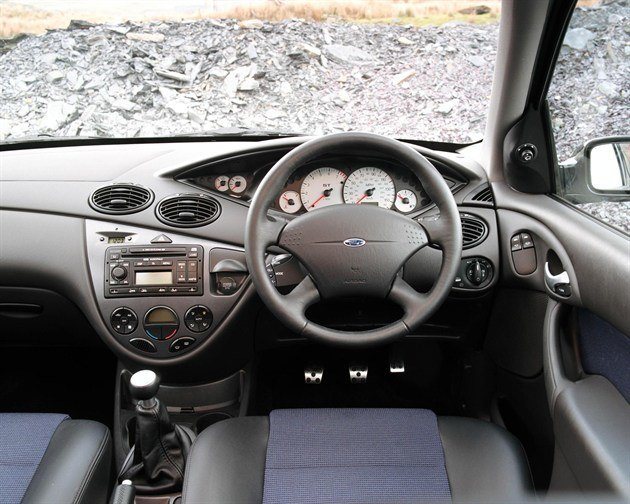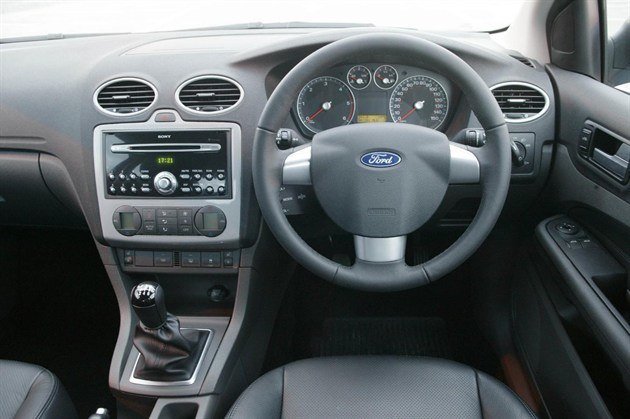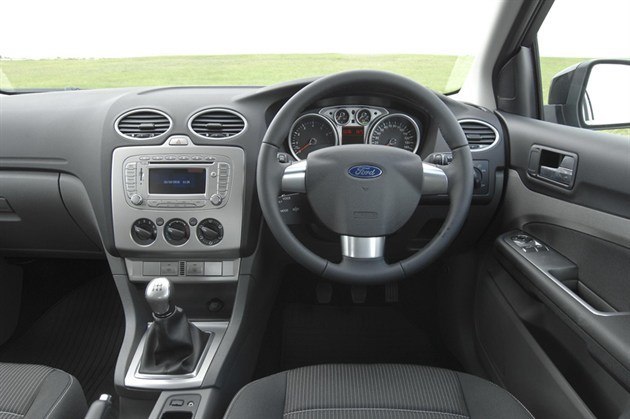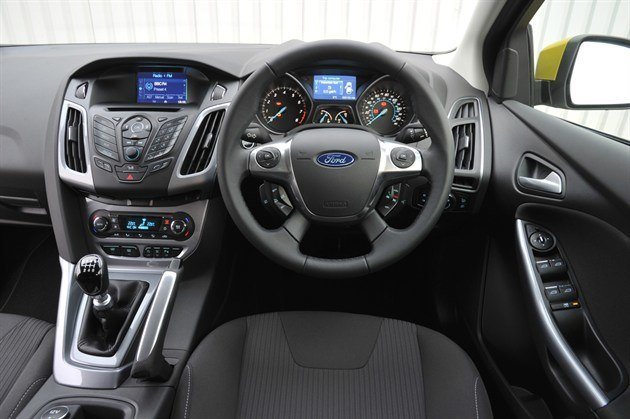A best-seller joins the Honestjohn.co.uk fleet
We're living with the load-lugging variant of the Ford Focus to see whether it can cut it as an all-rounder.

Date: 11 October 2011 | Mileage: 236 | MPG: -
After a long spell with a Skoda Yeti, I'm continuing the theme of living with cars that stir your interest and regularly crop-up in out Top Five most searched-for cars on the website.
And this one should look familiar as it's one of the best-selling cars in the UK. The original car, launched in 1998, looked like nothing else on the road and was so controversial that Ford kept the old Escort in production for a further two years as an option for buyers put off by the radical looks.
It's a world away from what Focus is today: a sensible, established, option for buyers looking for a well-made, well-specced family hatchback. My car is the estate version of the well-receieved third generation model. It's not the bodystyle that springs instantly to mind when people mention Focus, but the under-rated estate version should make a practical small load-lugger.
All the ingredients are there for this to be a cracking all-rounder. In silver (Moondust Silver for all the Ford paint name afficiandos out there) and in Titanium X-spec, it's a handsome-looking machine. The 17-inch 5-spoke alloy wheels are standard on this trim, as are the front and rear LED lights, but the appearance pack (£525) adds privacy glass - which works well with this colour - and keyless entry.
Unlike many others cars currently on the Honestjohn.co.uk Our Cars fleet, this Focus is petrol-powered. The 150bhp 1.6-litre turbocharged Ecoboost engine should produce a good mix of . And with the differential between diesel and petrol prices widening again, it may prove to be a better choice than if I had opted for either the lower-power 1.6 TDCi (just 115ps) or the 2.0-litre TDCI (163 ps and more expensive than the 1.6-litre). I'll come back to this subject in a later update ti see whether the sums stack-up for the driver who racks up the miles.
If the figures are to be belived (they generally aren't), it's capable of a range-stretching 47.1mpg. Early submissions to The Real Life Fuel Economy Register don't back that up with owners reporting 40.1mpg for the standard 1.6-litre Ecoboost engine and - bizarrely - 34.8mpg for the version with start/stop (which mine is). I'll be driving this Focus until the spring of next year, so there'll be plenty of time - and miles - to put the economy claims to the test.
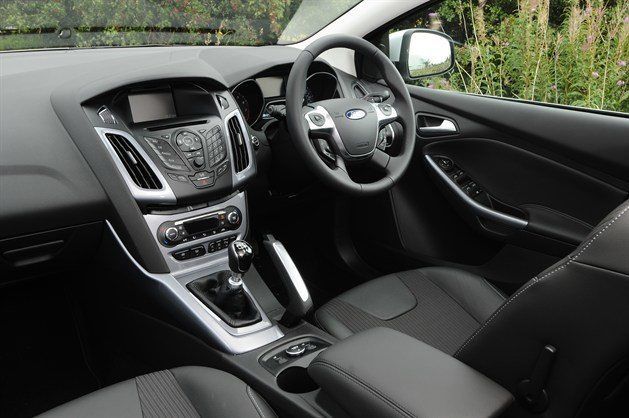
This Focus comes well equipped and I've specced a few choice options to test out some of Ford's latest technologies, many of which will be making it onto other Ford cars over the next few years. Most of these are included in the surprisingly good value Driver Assistance Pack, which includes Lane Departure Warning, Lane Keeping Aid, Driver Alert, Auto High Beam, Traffic Sign Recognition, Blind Spot Warning and Low Speed Safety System (which you can see a video of Honest John testing here). It's a lot of tech for £750, but the question that keeps crossing my mind is: will I use it all?
What’s good so far:
Comfortable, supportive seats; USB connectivity; punchy engine for backroads.
And what’s not:
Button-heavy dashboard is taking some time to get used to; tank range appears to be limited
The Inside Story - Now and Then
How does the interior of the latest Focus compare to those of the past?
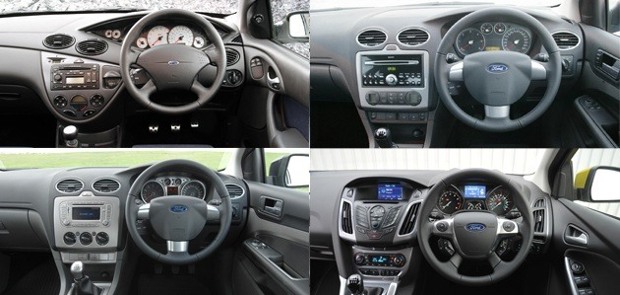
Date: 28 October 2011
One of the aspects of the current Focus that impresses me most is the quality of the interior. For a car of this size, it's superb. It looks fresh, the dials are easy to read and, once you've mastered what is where, it's easy to use on the move. It's packed with kit, too, with my car featuring everything from voice-activated controls to heated seats and auto-dipping headlights.
Looking at the pictures below, you can see just how far it's come since the original car of 1998.
Ford Focus 1998
The Focus's sharp exterior styling may have caused a stir when it was launched back in 1998, but its interior was far more conventional. Clean and simple to use, with some familiar parts from other Fords. Higher-spec models and special editions saw the availability of a 'QuickClear' windscreen for the first time, as well as the wider availability of air conditioning. The QuickClear windscreen is one thing that this original Focus shares with mine. Some people just don't get on with Quickclear winsdcreens - like a Magic Eye pictures, once they've seen the elements in the screen, they see them all the time. I never could get Magic Eye pictures and it's the same with Quickclear - I don't notice the elements on the move and appreciate the super-quick thaw it provides on frosty mornings.
Ford Focus 2004
Fast forward to 2004 and you can see that the MKII Focus has grown up, but lost a lot of the original's character. It's functional and easy to use on the move, but lacks the charm of the original's swooping lines and gentle curves. The upmarket Sony sound system makes an apperance for the first time on top models and is shared with the then recently-launched Focus C-MAX. One feature is that it plays MP3s - very uncommon at the time, but now something that we take for granted.
Ford Focus 2007
The MKII Focus underwent a substantial facelift in late 2007 and the interior was one of the areas marked out for special treatment. Responding to criticism over the lacklustre interior - and to tackle ever-improving rivals - Ford turned its attention to cabin details. New soft-touch plastics covered the instrument panel as well as the upper front door trim and this was complemented by plush new seat fabrics plus a variety of fascia finishings. The instrumentation was re-designed too and, along with all other interior controls, is illuminated in red. As you can see from the two pictures above, controls for the audio equipment were improved and the air conditioning swicthes went from being digital to analogue.
Ford Focus 2011
And now we're bang up to date - in every sense. The latest Focus pinches from both Fiesta and Mondeo, taking the Fiesta's style and blending it with the Mondeo's big car features. Blue needles add a hint of occassion, while fingertip controls ensure all controls are easily accessed. And that's important as there are two independent screens to control - the one to the left, which displays sat nav, audio and climate control details and the one within the instruments, used to show trip computer and information about the car (for instance if you've left a door open). One criticism is that there's a lot going on and, if you've never owned a Focus before or hate technology, it can take a little while to master. But, once you do, you'll soon finid that it becomes second nature.
A tale of two Focuses
When is a Focus not a Focus? When it's sold in the States.
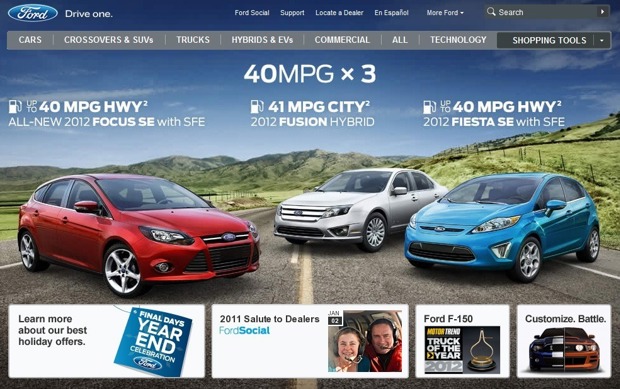
Date: 9 November 2011
While attempting to get to Ford's website to check some figures the other day, my fat fingers took me to ford.com instead of ford.co.uk.
Easily done and the kind of mis-key that's usually instantly recognisable once the site pops up and you're greeted with pictures of Mustangs and big pick-ups instead of the smaller cars we prefer in Europe.
But not this time.
I got the screen that's shown above, with a Focus and Fiesta in the foreground. For a few moments it threw me - was this actually the UK site? Where are the Mustangs? The F-150s? The Tauruses?
This generation of Focus (and to a lesser extent the Fiesta) is now an incredibly important car for Ford in the States. Americans have really taken to it, with its promises of low fuel consumption (maybe not by our standards, but 40mpg is good for the States), high levels of specification and modern styling.
Of course, the Focus is hardly a newcomer to the states and has been on sale over there for more than a decade. But it's not quite the Focus we know, despite its vaguely familiar looks. Launched in 2000, the American Focus started off broadly the same as the European Focus, with the option of saloon, estate and hatchback bodystyles. After that the two Focuses were developed separately. The American market didn't get the MKII, which went on sale in Europe in 2004. Instead, the MKI continued until 2007, when it got a makeover of its own. The hatchback and estate variants were dropped and Focus continued as a, ahem, sporty coupe and saloon. Both were treated to a thorough re-design with new seats, new dash and better equipment, but were still fundamentally based on the original Focus.
Judging by the pictures below (and reading reports from American car websites), it looks like we got the better deal.
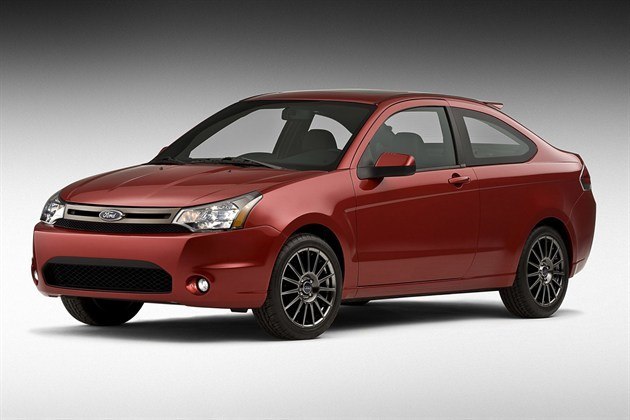
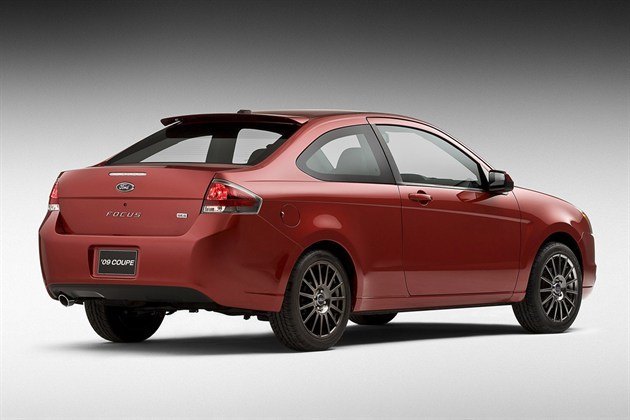
The unification bout came in early 2011 and it was a knock-out to the third generation European Focus. The American version was discontinued and the new Focus was launched simultaneously in early 2011.
There's been a huge marketing push behind the Focus in the States, including a series of amusing online-only ads featuring Doug, Ford's 'spokespuppet'. With this generation of Focus going truly global, it could be the first time that Europe isn't the overall largest market.
Why I Love Easy Fuel
Ford's clever mis-fuelling device remains one of the most practical and ingenious parts of the car.

Date: 24 November 2011 | Current mileage: 1876 | MPG: 36.2mpg
Easy Fuel isn't a new innovation on the Focus, in fact it's been offered as standard since the MKII facelift back in 2007.
But it remains one of the most thoughtful touches and most practical features and something I remain impressed by every time I fill up the car. The idea behind it is simple. It does away with the conventional fuel filler cap and a clever filler neck prevents mis-fuelling. It won't allow a petrol pump into a diesel car and vice versa.
It means that when you pull up at the pumps to fill up your car, you don't have to touch the filler cap (just the outside of the flap) and therefore you don't get petrol or diesel on your hands. You also won't leave the cap on the car's roof... For drivers who have arthiritis it's a good choice too, as there's no twisting action involved.
The way it works is that there are two latches in the filler neck that can only be released by the right size of nozzle. The latches release when the correct nozzle is inserted and it opens the flap that otherwise keeps the filler neck sealed.
One downside is if you run out of fuel - you can't use the normal filler on a petrol can without a special adaptor to open the latches in the filler neck. This does also mean that fuel cannot be syphoned. The adaptor (below) is included with the breakdown kit.
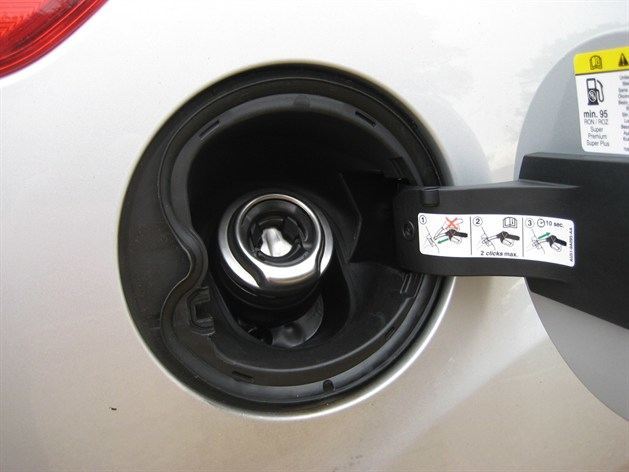
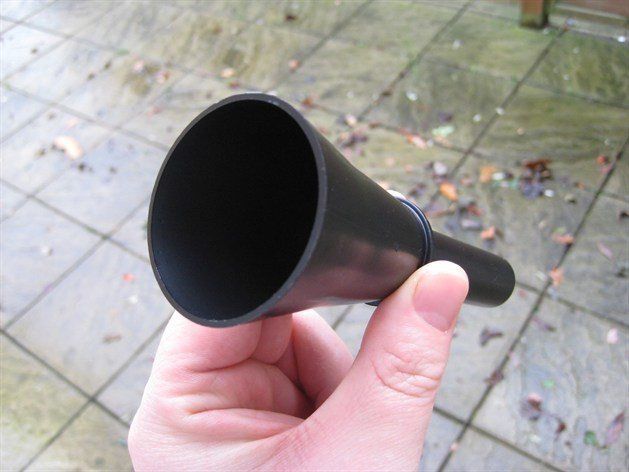
The Focus-Do-It-All
The Focus estate may be more stylish than ever, but does it still make a useful load carrier?

Date: 6 December 2011 | Mileage: 2486 | MPG: 36.8
So how does the Focus estate measure up to its rivals and is it worth going for an estate when the hatch itself is pretty roomy?
As you can see from the figures below, there's a noticeable difference between the hatch and estate, which means that the load-carrying version of the Focus remains an attractive option for those with a small business where running a van would be overkill.
| Make and Model | Boot Space (litres, seats folded) |
| Ford Focus Hatchback | 1101 |
| Ford Focus Estate | 1502 |
| Vauxhall Astra Sports Tourer | 1550 |
| Volkswagen Golf Estate | 1495 |
Family buyers will be impressed with the useable space too. The on-paper figures tell one story, but it's not until you're able to put it to the real-world test that you get a sense of how much space there is. Compare it to the five-door and you'll find that it's 20cm longer, as 10cm more space between the wheel arches. With the seats up there's 476 litres of space - enough for the everyday needs of most families. Practical touches include the roller-blind parcel shelf, which is ideal for keeping the boot content cool or out of view, a 12V socket, hooks for carrier bags and lashing points on the floor.
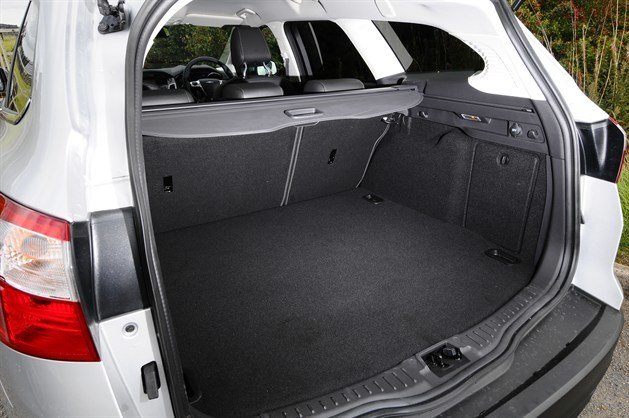
My unexpected test came when we bought a new three-seater sofa. The day wasn't planned that way - we went out to get some bargains at the Habitat closing down sale and came back with this new sofa. Being a closing down sale, the sofa had to be taken there and then. Would the Focus be up to it?
After some frantic tape-measing, I figured out that although it would be a tight squeeze, it would just about fit. So I set about maximising the interior space. Normally the back seats don't fold entirely flat, but the squabs are hinged at the front, which means you can lift them up and fold the seat backs entirely flat. It was then a case of sliding the front seats forward as much as possible before gently gliding the sofa into the back. With a bit persuading, the entire sofa made it into the car. Though it did mean a return trip as all the passenger seat space was taken.
Since then, the Focus estate as proved itself time and time again as a practical workhorse. Whatever the task, it's been more than up to the job. There have been weekends away with large bags and cases, shopping trips and even having to deal with a theme park trips with three teenagers in the back and ll their bags.
Focus: The innovations continue
Although my Focus estate is packed with technology, new innovations are being launched on the model less than a year since launch.

Date: 4 January 2012
My Focus is packed with kit, much of which would have been science fiction just a few years ago. It will park itself, there are voice-activated controls, automatic main beam and a safety system.
But the innovation doesn't stop there. Despite being on sale for less than a year there are a couple of new features on the horizon that are not only worth a mention, but could become attractive
The most significant of these is the addition of an incredible UK-developed 1.0-litre Ecoboost engine to the line-up from February. I know you're probably thinking that this sounds like an entry-level weakling, but that couldn't be further from the truth. It's related to the 1.6-litre Ecoboost engine in my car, using turbocharging technology to punch well above its weight. And the comparison doesn't end there as this 1.0-litre Ecoboost engine offers more power than the Focus's current naturally-aspirated 1.6-litre (125PS against 115PS).
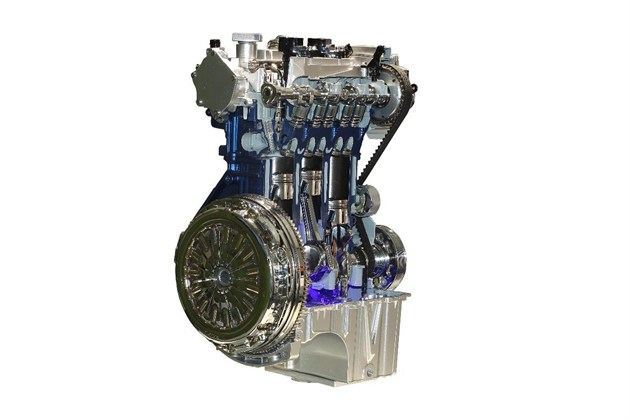
The benefits of this engine - the footprint of which can fit on a sheet of A4 paper - are clear. In the five-door Focus at 125PS it delivers a combined fuel economy of 56.5mpg and CO2 emissions of 114g/km - you won't find a similar car with a similar power output with a lower figure. The lower-power 100PS version goes one better, coming in at 58.9mpg and 109g/km, taking it into diesel-rivalling territory.
Company car drivers will see attractive benefit-in-kind rates of only 13 per cent in 2012/2013 equating to savings on a Focus Zetec of up to £32 per month at the 40 per cent tax level versus the current 1.6-litre 105 and 125PS engines.
Less technically advanced, but no less practical is the introduction of Ford's 'Door Edge Protector', also on available on Focus early this year. It's designed to prevent dents and scratches as a result of opening a car door in a confined space. The system – designed by Ford engineers in Cologne, Germany – works automatically when the door is opened. A protective flap concealed in the door moves into position in a fraction of a second as the door opens providing a buffer that prevents damage to paint and body work. In just 60 milliseconds, it will retract to allow the doors to be slammed shut and includes a clutch mechanism that prevents damage if the flap is obstructed when returning. A special rubber compound is used that can withstand thousands of usage cycles and creates a minimum of noise as it springs into position. The protective flap is quickly and easily replaced by heavy users, with the unit simply clipping into place.
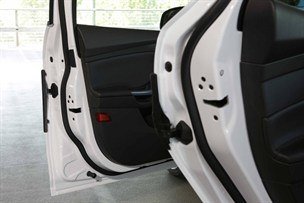
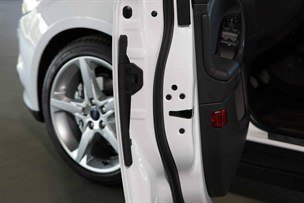
It's another one of those simple, but incredibly effective ideas that you'll really appreciate every day. Much like EasyFuel, that I've spoken about here.
Petrol or diesel?
With diesel prices at an all-time high and the differential between petrol and diesel widening, does petrol make better sense?

Date: 7 March 2012 | MPG: 36.2
Over the past few weeks, we've seen the price of diesel rise to record levels. It currently sits at a national average of 145p per litre. That means that the average 55-litre fuel tank now costs £80 to fill.
At the same time, the differenctial between petrol and diesel has been widening again. So, I thought, what better time to crunch some numbers to see if I made the right choice by opting for a petrol?
The 1.6-litre engine in the Focus is proving to be a little thirstier than I had anticipated. Although I try to keep a right-foot, it really likes to be revved, which is when you start to get the best out of the performance. Although theoretically capable of 47mpg, I'm seeing 36mpg in everyday driving.
So how do the numbers stack up?
Official figures
| Ford Focus 1.6-litre EcoBoost Titanium X | Ford Focus 2.0-litre TDCI Titanium X | |
| List Price | £22,595 | £24,195 |
| Fuel Consumption (official mpg) | 47mpg | 57mpg |
| Price Per Litre (pence) | 137p | 145p |
| Extra cost to buy | £1600 | |
| Cost of fuel per 1000 miles | £132 | £115 |
| Miles to break even | ||
| Time to break even at 12,000 miles per year | 7.8 years |
As you can see, at an average mileage of 12,000 miles per year, you will only recoup the premium of the diesel when the car is coming to the end of its life. To keep it fair, I've used the list price (without options), but the more you can negotiate off, the better the saving will be.
But the official figures only tell one side of the story. I've run the numbers again, but this time using what owners have submitted to The Real Life Fuel Economy register.
Figures from the Real Life Fuel Economy Register
| Ford Focus 1.6-litre EcoBoost Titanium X | Ford Focus 2.0-litre TDCI Titanium X | |
| List Price | £22,595 | £24,195 |
| Fuel Consumption (official mpg) | 38mpg | 44mpg |
| Price Per Litre (pence) | 137p | 145p |
| Extra cost to buy | £1600 | |
| Cost of fuel per 1000 miles | £164 | £149 |
| Time to break even at 12,000 miles per year | 9.4 years |
In this instance, you'd have to be covering an incredibly high mileage per year in order to make a diesel pay. That means 38,000 miles per year if you want to start seeing the savings by year three.



